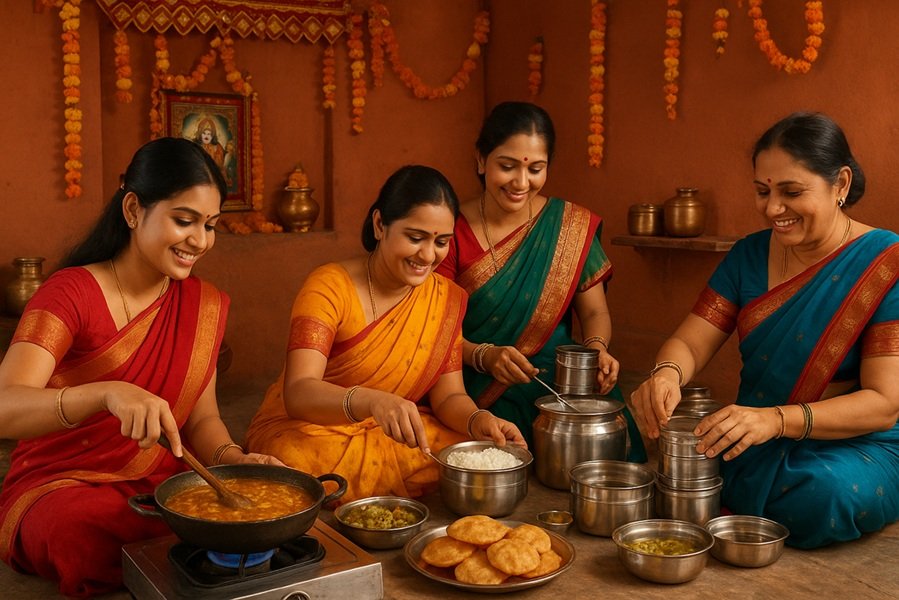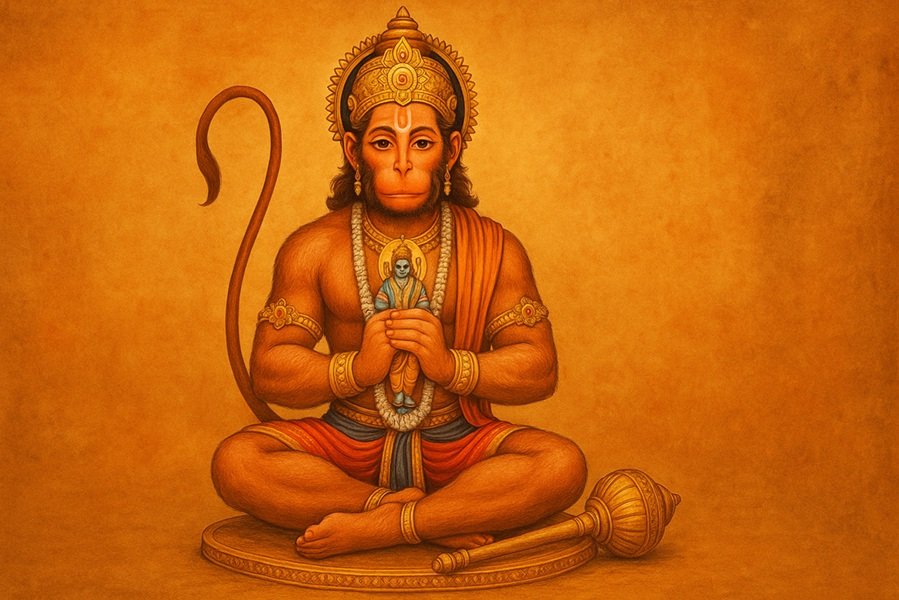
Randhan Chhath 2025 Date: Thursday, August 14, 2025
Shitala Satam 2025 Date: Friday, August 15, 2025
Shashthi Tithi Begins: 04:23 AM on August 14, 2025
Shashthi Tithi Ends: 02:07 AM on August 15, 2025
Introduction
Randhan Chhath is a unique and culturally significant observance in the Gujarati calendar. It is not celebrated as a standalone festival but forms an essential part of Shitala Satam, a revered festival dedicated to Goddess Shitala Devi. This day holds deep religious and cultural importance, especially among Gujarati communities, and is marked with traditional cooking rituals that prepare for the following day’s observances.
What is Randhan Chhath?
The name “Randhan Chhath” literally means “Cooking on the Sixth Day”, as it falls on the sixth day (Chhath) of the Krishna Paksha during the Shravana month according to the Hindu lunar calendar. This day comes one day before Shitala Satam, which is observed on Krishna Paksha Saptami.
On Shitala Satam, it is strictly prohibited to cook food — as per traditional beliefs, Goddess Shitala prefers cold and previously prepared meals. Therefore, Randhan Chhath is the designated day for preparing food that will be consumed during Shitala Satam.
Date and Timing in 2025
- Randhan Chhath 2025 Date: Thursday, August 14, 2025
- Shitala Satam 2025 Date: Friday, August 15, 2025
- Shashthi Tithi Begins: 04:23 AM on August 14, 2025
- Shashthi Tithi Ends: 02:07 AM on August 15, 2025
The observance aligns with the Hindu Panchang, ensuring rituals are performed in the correct muhurat for maximum spiritual merit.
Connection with Shitala Satam
Shitala Satam is a religious festival dedicated to Maa Shitala Devi, the goddess associated with health, protection from diseases (especially smallpox in ancient times), and purification. On this day, devotees avoid lighting stoves or cooking, as it is believed that fire should not be lit in honor of the goddess’s cooling and healing nature.
Randhan Chhath is, therefore, the preparatory day for Shitala Satam, ensuring that all food items are cooked in advance.
Rituals and Observances of Randhan Chhath
1. Cooking for the Next Day
On Randhan Chhath, families prepare all the meals that will be eaten on Shitala Satam. Popular dishes include:
- Thepla
- Puri
- Bhaji (vegetable preparations)
- Khichdi
- Dal
- Chutneys
- Sweet dishes like lapsi or kheer
These foods are stored properly to be consumed cold the next day.
2. Community and Family Gatherings
The day is often a lively occasion, with women gathering in kitchens early in the morning to begin large-scale cooking. In some areas, neighbors exchange food items, fostering community bonding.
3. Kitchen Cleaning and Preparation
Hygiene is an essential part of the ritual. Kitchens are thoroughly cleaned, utensils are arranged, and the hearth is readied for the day’s cooking.
4. Avoidance of Fire the Next Day
The cooking done on Randhan Chhath ensures that on Shitala Satam, no new fire is lit. This tradition is symbolic of honoring the cooling and healing aspect of Goddess Shitala.
Cultural and Religious Significance
1. Preserving Tradition
Randhan Chhath reflects the deep-rooted customs of Gujarat, where culinary preparation becomes a religious act in itself.
2. Health and Hygiene
Ancient traditions often had practical reasoning — consuming cold, pre-prepared food once a year acted as a mild detox for the body and reduced exposure to smoke/fire, which was significant in earlier times when indoor air circulation was limited.
3. Devotion to Shitala Devi
By observing Randhan Chhath and Shitala Satam, devotees express their reverence for Maa Shitala, seeking her blessings for protection from diseases and family well-being.
Regional Variations
While Randhan Chhath is most prominently observed in Gujarat, similar practices exist in parts of Rajasthan and Madhya Pradesh. However, the Gujarati observance is more elaborate, with a wider variety of dishes and a more communal atmosphere.
Dos and Don’ts of Randhan Chhath
Dos:
- Cook enough food to last through Shitala Satam.
- Maintain cleanliness in the kitchen and utensils.
- Include traditional dishes in the preparation.
- Store food in clean, covered containers.
Don’ts:
- Avoid tasting food while cooking (as a mark of devotion).
- Do not prepare food in a hurry — it is a ritual, not just daily cooking.
- Avoid using leftover food from before Randhan Chhath for Shitala Satam.
Modern-Day Observance
Even in urban areas, many Gujarati families continue to observe Randhan Chhath, though methods may adapt — refrigerators replace traditional clay pots, and modern stoves replace wood-fired chulhas. However, the sentiment remains unchanged: it is a day of preparation, devotion, and community bonding.
Conclusion
Randhan Chhath is a beautiful blend of faith, tradition, and practicality. It not only upholds the age-old reverence for Goddess Shitala but also strengthens family and community ties through shared rituals and meals. In 2025, as it falls on Thursday, August 14, Gujarati households will once again fill their kitchens with the aroma of traditional dishes, preparing to honor the goddess the following day on Shitala Satam.





